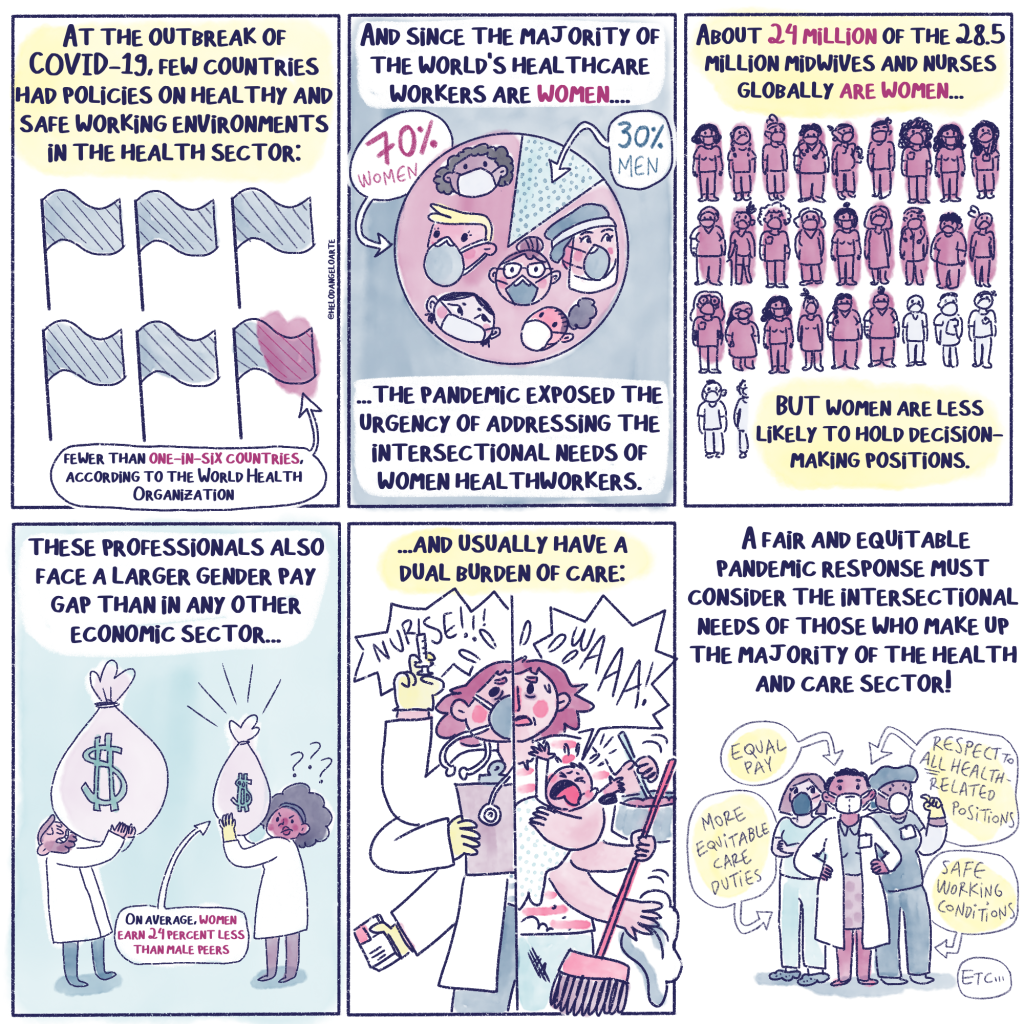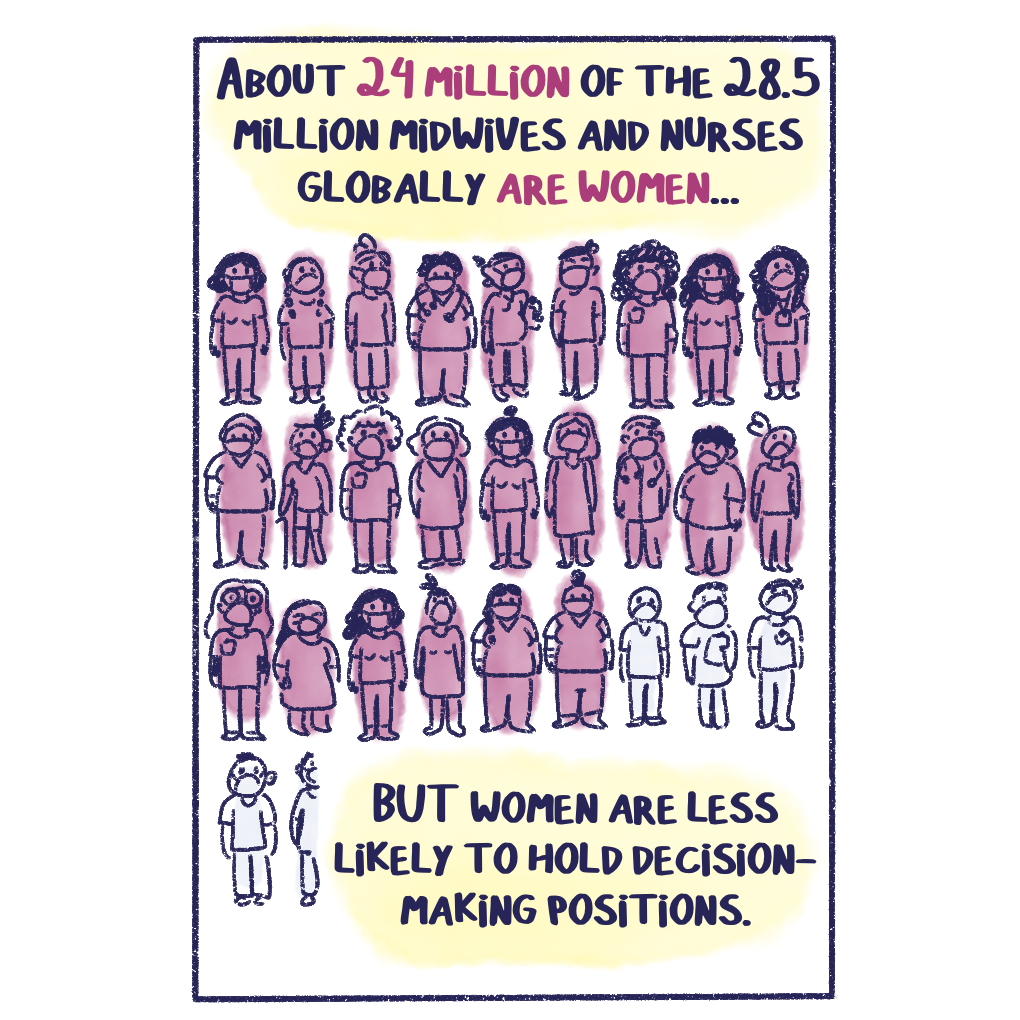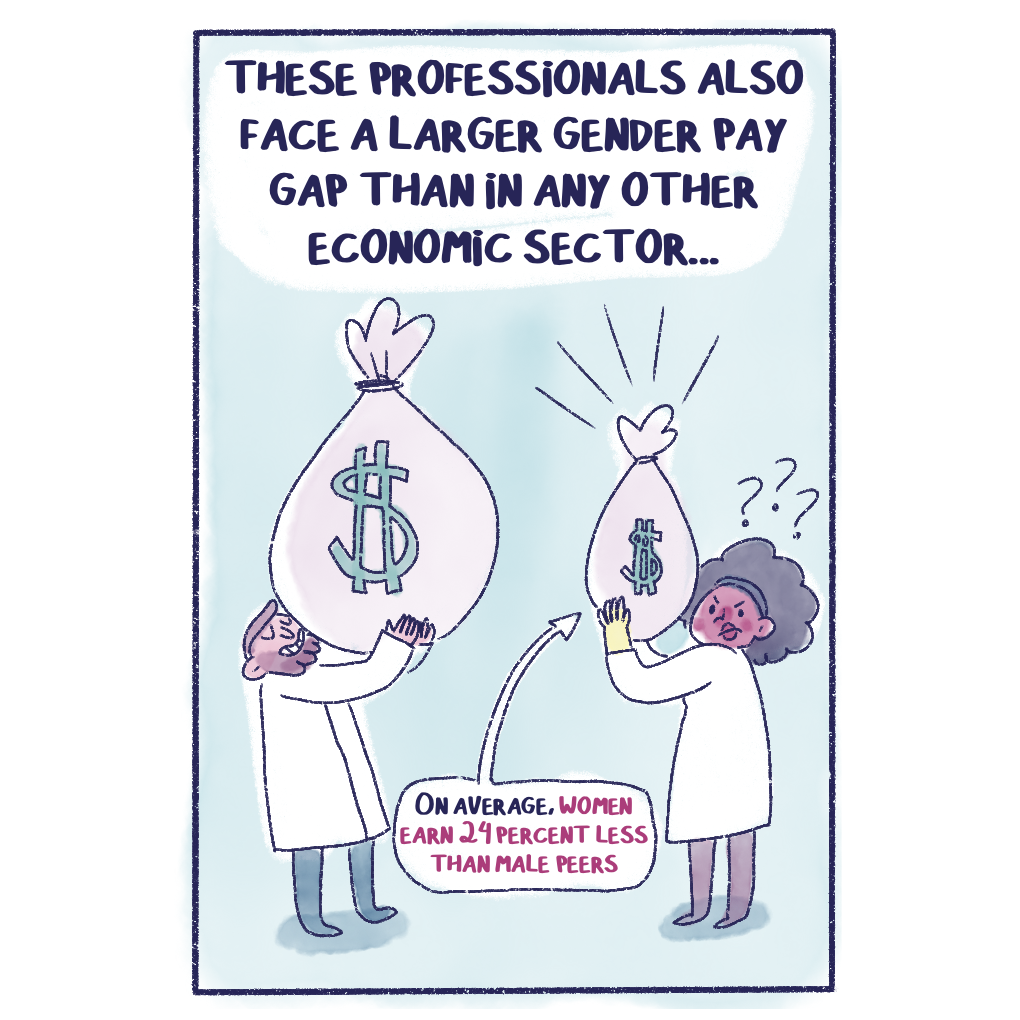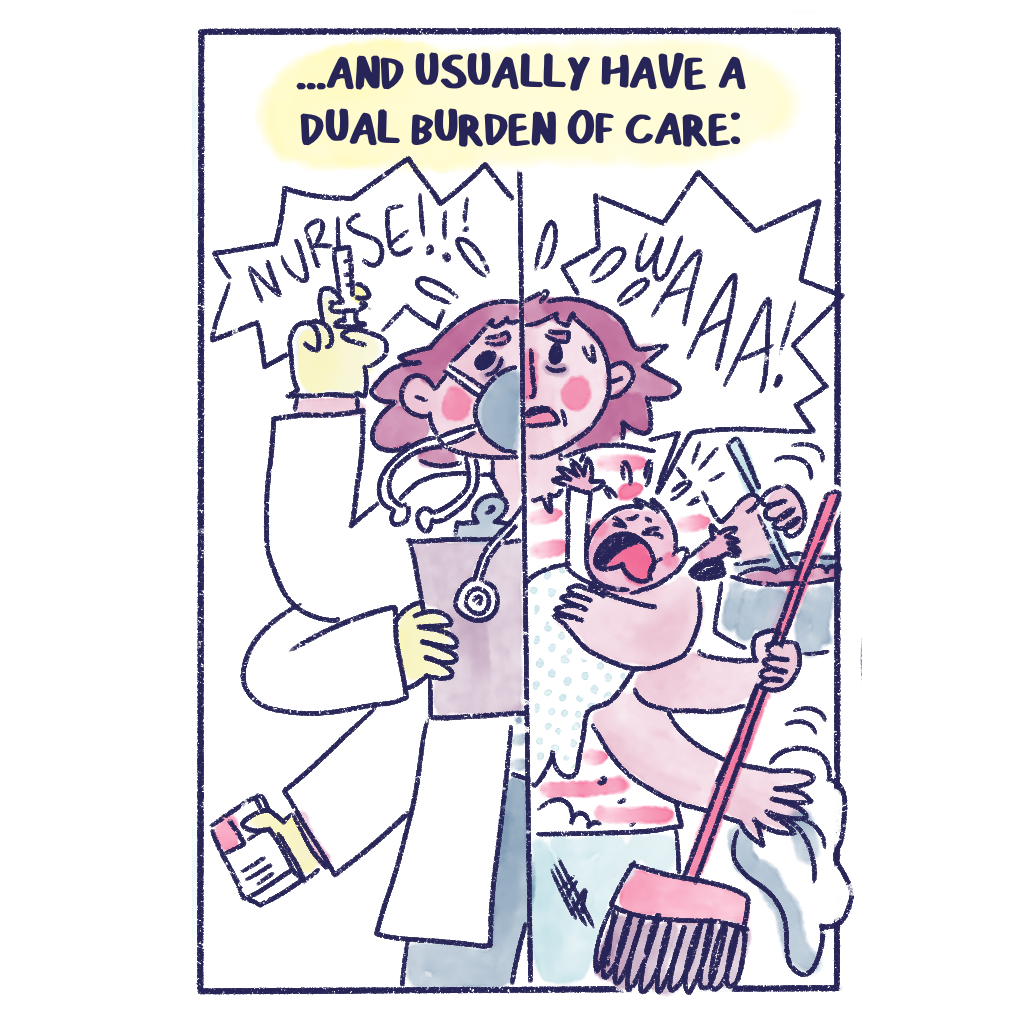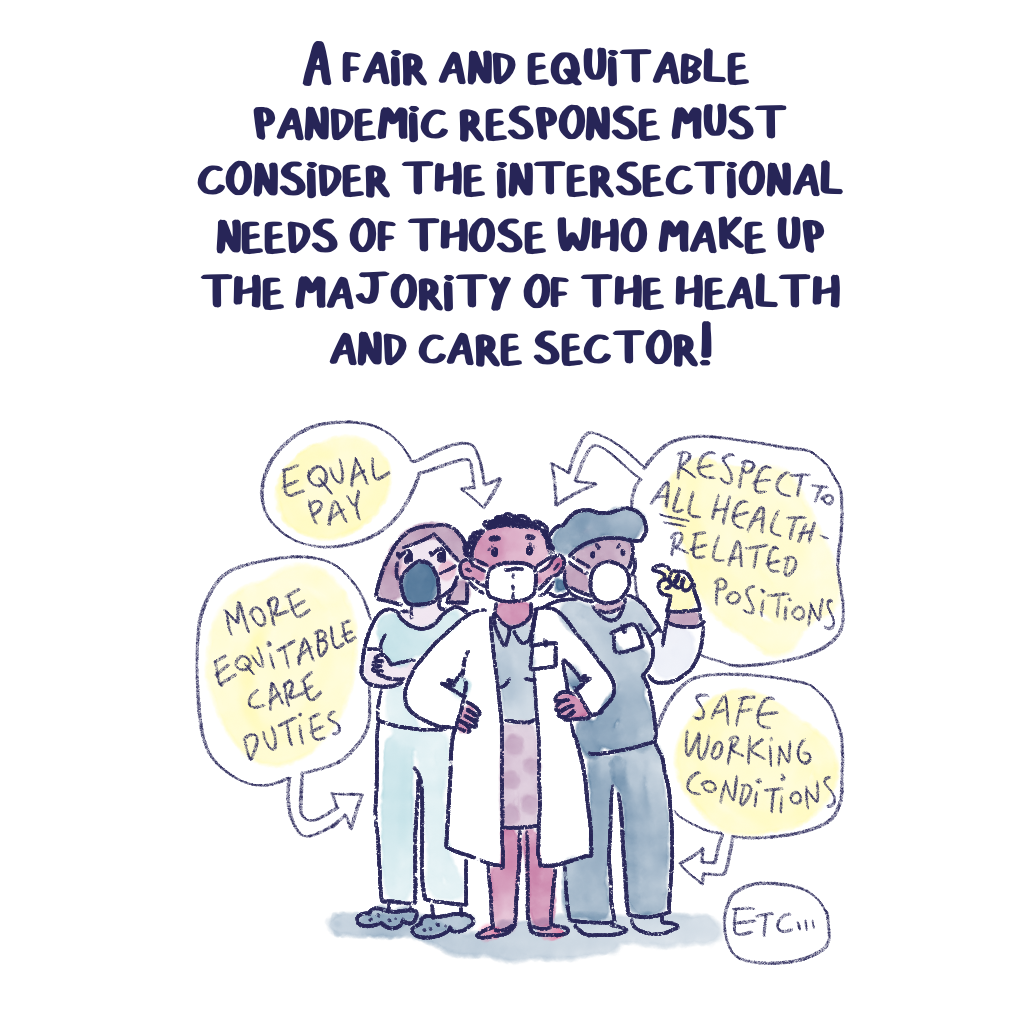Multimedia > Cartoons >
Exhausted, Exposed, and Vulnerable: How COVID-19 unmasked the gendered global care #crisis
24 Apr 2024
The #pandemic underscored the long-neglected intersectional needs of women who make up a majority of healthcare workers worldwide. The World Health Organization has noted that at the outbreak of COVID-19, less than one in six countries had a national policy on a healthy and safe working environment. Globally, about 24 million of the 28.5 million nurses and midwives are women. However, women earn, on average, 24% less than their male counterparts, highlighting one of the larger gender pay gaps compared to other sectors. Moreover, women’s care work never ends. They bear a dual burden of care that extends continuously from working longer shifts at hospitals to managing care responsibilities at home. Women’s contribution to the health and care industry is significant. However, they are less likely to take on leadership roles where their voices can be heard and their experiences considered. Issues that range from ill-fitting PPEs to care duties that extend from hospital to home remain muted in decision-making processes. As a #pandemictreaty is being negotiated at the World Health Organization, the #Fem4PeoplesVaccine campaign calls for centering equity issues on the right to access vaccines and medicines as well as a work environment that ensures the safety and dignity of women healthcare workers.

